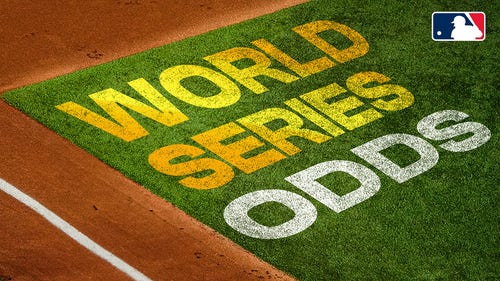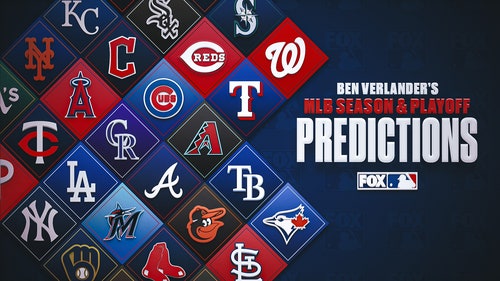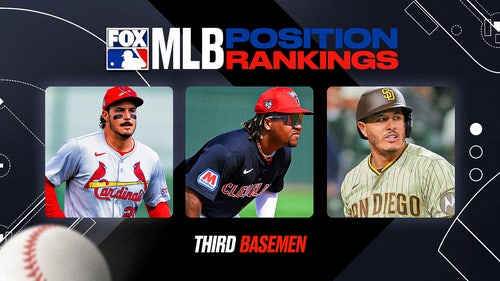
Red Sox vs. Indians Roster Breakdown: Starting rotation comparison
Many are torn on whether the Boston Red Sox or the Cleveland Indians are the 2017 AL favorites. Breaking down the roster position by position is how to determine the winner.
David Banks-USA TODAY Sports
Are the Boston Red Sox the team to beat in the American League or is it a Cleveland Indians team coming off of a pennant winning season?
After landing arguably the biggest free agent prize of the offseason, slugger Edwin Encarnacion, many experts and fans alike have boasted the Indians as the AL favorites heading into the 2017 season. Of course, after landing arguably the biggest trade prize of the offseason in ace Chris Sale, many are saying the same about the Red Sox.
To see which playoff contender is truly deserving of the title of American League favorite (which of course means nothing in reality, it’s just for fun), I’m going to do a weekly series, conducting a position-by-position comparison of what the Red Sox and Indians have to offer.
We started two weeks ago by breaking down the respective infields for each team. Last week, we turned our attention to the outfield and designated hitter spots. This week, we examine the starting rotations that each team has to offer, breaking it down pitcher by pitcher.
While there is ample drama about how the bottom of the Red Sox rotation will shake out, and while neither team has officially ordered their rotation No. 1 through 5 (and of course, the offseason isn’t over, leaving room for additional transactions), for the purpose of this experiment the rotations will go as followed:
Red Sox: Chris Sale, David Price, Rick Porcello, Drew Pomeranz, Steven Wright/Eduardo Rodriguez
Indians: Corey Kluber, Carlos Carrasco, Danny Salazar, Trevor Bauer, Josh Tomlin
Let’s jump right in with the number one starter on each team.
Ken Blaze-USA TODAY Sports
The Show-Stopper
Chris Sale
Red Sox fans can hardly wait to watch the arrival of newcomer ace Chris Sale as he takes the hill, and for good reason. Representing the blockbuster of the offseason, Sale came over from the Chicago White Sox in exchange for super-prospect Yoan Moncada, flame-throwing righty Michael Kopech, and two other low-minors prospects.
A few things bode well for Sale’s Sox transition. Firstly, he has historically dominated Boston’s AL East competition. A 2.25 ERA versus the Blue Jays, a 3.41 ERA versus the Orioles, a 3.76 ERA versus the Rays, and a whopping 1.17 ERA versus the Yankees (which is actually the lowest by any pitcher against the Yankees in the last 100 years with a minimum of 50 innings pitched) is sure to strike fear in the opposition.
But Sale’s dominance hasn’t been confined to the AL East, he’s a proven workhorse who is capable of putting up gaudy strikeout totals with devastating stuff and pinpoint command.
Corey Kluber
Indians’ mainstay Corey Kluber has been every bit as impressive as Sale ever since he broke out as a top-shelf starter in 2013. In that span, he has recorded a 3.16 ERA, 1.10 WHIP, and a 9.5 K/9, showing the same ability to limit home runs and walks while racking up strikeouts. Somehow only making one All-Star appearance (2016), Kluber took home the AL Cy Young in 2014 before placing ninth and third in the subsequent seasons.
He was also a force to be reckoned with in the 2016 postseason, an experience that Sale has never felt stranded on the South Side. Over the Indians’ World Series run, where the team was notably without fellow starters Carrasco and Salazar, Kluber represented the only reliable starting pitcher, and it was a burden he handled with aplomb. Holding the opposition to seven runs over 34.1 innings, the righty registered a 4-1 record providing necessary stability to a shaky rotation.
In a battle between two bona fide aces and two of the top starters in the American League, it would be unfair to pick one over the other. Truth is, both Sale and Kluber are projected to have Cy Young-caliber seasons once again as they have each consistently done for years.
Advantage: Tie
Adam Hunger-USA TODAY Sports
The Vice Ace
David Price
Dubbed as the next ace of the Red Sox for the next seven years upon signing a $217 million contract, Price didn’t exactly burst out of the gate in 2016. The lefty was one of baseball’s premier starting pitchers before shipping up to Boston, pitching to a 2.97 ERA, 1.11 WHIP, and 8.7 K/9 between 2010 and 2015. He featured a blazing fastball that hovered around 95-96 MPH, one that he could cut or tail depending on the situation.
But something was off when he arrived in a Red Sox uniform, as that same fastball dropped down to a 91-94 MPH range. The pinpoint control that he relied on to paint the corners was also diminished; Price would frequently leave pitches hanging over the plate, a dangerous maneuver without the velocity to back it up.
What resulted is a 3.99 ERA, 1.20 WHIP, and an 8.9 K/9. Price could still strike guys out, but now he was getting hit, hard. His HR/9 ballooned to 1.2, a career-high, as his BB/9 crept up to 2.0. These subtle peripherals added up to amount to what was ultimately a disappointing freshman year in Boston.
However, his most notable characteristic in his prior run of dominance was his ability to log 200+ innings in all but one of those seasons. If nothing else, that certainly carried north with him, as Price was able to throw 230 innings in 2016, only behind his 2014 campaign when he managed a whopping 248.1 innings. Even with a declined performance, those innings are plenty valuable, saving the bullpen from over-usage.
Perhaps at age 31 it’s unreasonable to assume Price will revert back to his prime self, but it’s not out of the question. And a marginal improvement in that direction wouldn’t surprise many people as the veteran looks to get back in Red Sox fans’ good graces.
Carlos Carrasco
Breaking out at age 27 in a 2014 campaign that saw him post a 2.55 ERA, a 0.99 WHIP, and a 9.4 K/9, Carrasco established himself into a legitimate No. 2 starter. The performance and talent is there; what’s holding him back is his inability to crack 200 innings. Over the past three seasons, the 29-year old has a 3.22 ERA but over just 464 innings – an average of 155 per year.
On a per-game basis, Carrasco is probably the safer option to a possibly-declining Price. But over a season, Price is still the more valuable pitcher. Even during his worst seasons in years, Price’s 230 innings of 3.99 ERA ball still held significant indirect value that overshadows 155 innings of 3.22 ERA ball.
Even if Price remains just as ineffective at limiting home runs and can’t harness his usual pinpoint control, the workload difference here is too much to overcome for Carrasco.
Advantage: Red Sox
Kim Klement-USA TODAY Sports
The No. 3 Who Shouldn’t Be
Rick Porcello
Isn’t it crazy how just two seasons ago, the Red Sox had five pitchers with no discernible top-of-the-rotation starter, and here we are now putting the reigning AL Cy Young award winner at the No. 3 spot? The Red Sox rotation has come a long way since the dark days of 2015, and the turnaround of Rick Porcello is one of the main factors.
In the first season of his four-year, $82.5 million extension, Porcello turned a potential albatross contract into a potential steal. Racking up a league-leading 22 wins (which is still impressive even if wins are a dumb stat), Porcello managed 223 innings, a 3.15 ERA, and a 1.01 WHIP, all of which are career bests.
For a pitcher with Porcello’s repertoire and previous career numbers, some regression is expected. But it seems like he has fully regained his ability to locate his two-seamer down to generate ground balls while using his four-seamer to elevate and blow hitters away. Few No. 3 pitchers have as positive a 2017 projection as Porcello, but the Indians’ have one of those select few.
Danny Salazar
Salazar runs into a similar problem as Carrasco. He’s a fearsome pitcher when he’s on the mound – his career 3.58 FIP and 10.1 K/9 finally earned him an All-Star appearance in 2016 – but he’s only made 30 starts once (due to both inconsistency and injury), and even in that season he only threw 185 innings.
Salazar’s 3.87 ERA from 2016 is a bit deceiving, as his first half ERA was 2.75 before he battled through arm injury and struggled to a 7.44 ERA in eight second half starts. But nonetheless, while his ability to pitch effectively is settled, his durability remains a legitimate question going forward. How many innings can the Indians realistically expect out of Salazar? I’d wager not as much as the Red Sox expect out of Porcello, and given their similar levels of recent performance, the nod has to go to Boston.
Advantage: Red Sox
David Richard-USA TODAY Sports
Following Up the Big Three
Drew Pomeranz
Acquired after an All-Star first half of 2016 with the San Diego Padres, Pomeranz was slightly disappointing in his time with Boston. His ERA ballooned over two full runs to land at 4.59, and while his K/9 rate remained an elite 9.3, his H/9 rate nearly doubled and his HR/9 rate more than doubled. In short, he could still miss bats, but when he didn’t, he was getting pounded.
More from BoSox Injection
There are a lot of red flags surrounding the tall lefty going into 2017, but all indications still point to him getting a coveted rotation spot over one of Eduardo Rodriguez and Steven Wright. He gives up plenty of fly balls, not suited for Fenway Park, and he has never surpassed 170.2 innings in his career. Many attributed his second half decline to his rising inning count, but even if true, it doesn’t bode well for Pomeranz’s ability to pitch effectively over a full season.
If Pomeranz does end up making the Red Sox rotation, he’s the biggest question mark in the pitching staff – one that carries high reward but even higher risk.
Trevor Bauer
Once a top pitching prospect in all of baseball, Trevor Bauer has somewhat settled in as a back-of-the-rotation wild card. And I mean “wild” literally.
Bauer seems to have little control of where his pitches go, resulting in a sky-high 3.9 BB/9 but also an 8.3 K/9. With a blazing fastball with a devastating splitter to complement, the 26-year old can be nearly untouchable when he’s on. But patience is a virtue when facing a pitcher like Bauer: wait him out and runs will score. Thus, Bauer can have games where he pitches like an ace and others where he’s watching from the dugout in the third inning. These inconsistencies can be frustrating on a per-game basis, but over the course of a season, Bauer has actually been pretty consistent with his results.
Hovering around a mid-to-low 4 ERA, Bauer’s innings have increased every year, culminating at 190 in 2016. Looking to challenge the 200 mark for the first time, Bauer’s occasional dominance and overall effectiveness makes him a quality #4 starter.
Advantage: Indians
Peter G. Aiken-USA TODAY Sports
Rounding It Out
Steven Wright/Eduardo Rodriguez
With the back end of the Boston rotation under considerable uncertainty, it’s impossible to tell who’s going to be the odd man out. Given that young lefty Rodriguez is the only of the three with a minor league option remaining and knuckleballer Wright can be unpredictable, it could very well become a competition between these two pitchers. So, for the sake of the article, we’re going to take both into account.
Luckily for the Red Sox, this is a good problem to have, because both starters carry significant upside for a potential No. 5 starter.
Wright, as many forget, was voted into the All-Star game in 2016 on the heels of a 114 inning run of first half dominance, chalking up a 2.68 ERA and a .225/.305/.322 opposing slash line. Aside from the occasional rainy conditions that make it difficult for a knuckleballer, Wright was as steady as they come before manager John Farrell made perhaps the most boneheaded move in recent memory by pinch running the righty in a game against the Dodgers. Wright would injure his shoulder and lose effectiveness before losing the rest of the season.
Rodriguez had the opposite season, having started the season shelved with a lingering knee injury before slumping to a nightmarish 8.59 ERA in six first half starts. Once the health problems subsided and mechanical issues were fixed, E-Rod settled in and pitched to his potential. His second half ERA was cut down to 3.24, holding opposing batters to a .210/.284/.329 line.
There’s no doubting Rodriguez’s potential, but the young lefty has to show some signs of consistency before becoming a reliable rotation member. The availability of his minor league options may start him in Triple-A, but Rodriguez holds exceptional upside for a No. 5 starter.
Josh Tomlin
Josh Tomlin had a surprisingly effective first half of 2016 that shocked many, pitching to a 3.51 ERA over 16 starts. But his .261 BABIP and inflated FIP suggested that his weakness to home runs would eventually catch up to him. And catch up it did, as his second half ERA sharply rose to 5.59 as his BABIP normalized to .298.
Tomlin serves as a good innings eater for the back of the rotation, but his inability to strike batters out and his risky tendencies to give up the long ball bring down his ceiling and lower his floor.
Simply put, no matter who takes the ball for the Red Sox on the fifth day, he will represent a better option than Tomlin.
Advantage: Red Sox
Kim Klement-USA TODAY Sports
The Results
Despite both teams boasting some of the American League’s top rotations, the Red Sox take the edge in the battle of starting rotations. Sale, Price, and Porcello represent a near-perfect combination of performance and durability, and while the Indians’ Kluber, Carrasco, and Salazar meet the standards on performance, the latter two haven’t shown as much in the way of longevity throughout a full season.
The back of the rotation is split between the two teams, as Bauer has shown more reliability and fewer red flags with Cleveland than Pomeranz has with Boston. At the same time, either one of Steven Wright and Rodriguez have rare upside for a No. 5 starter – upside that Tomlin doesn’t possess.
You can find the earlier infield here, and outfield results here, but for now, here are the aggregate results thus far:
Indians: 4 (1B, SS, 3B, No. 4 SP)
Red Sox: 6 (2B, CF, RF, No. 2 SP, No. 3 SP, No. 5 SP)
Tie: 4 (C, LF, DH, No. 1 SP)
Feel free to leave a comment with any agreements or disagreements, as many positions can go either way with these two powerhouse teams.










































































































































